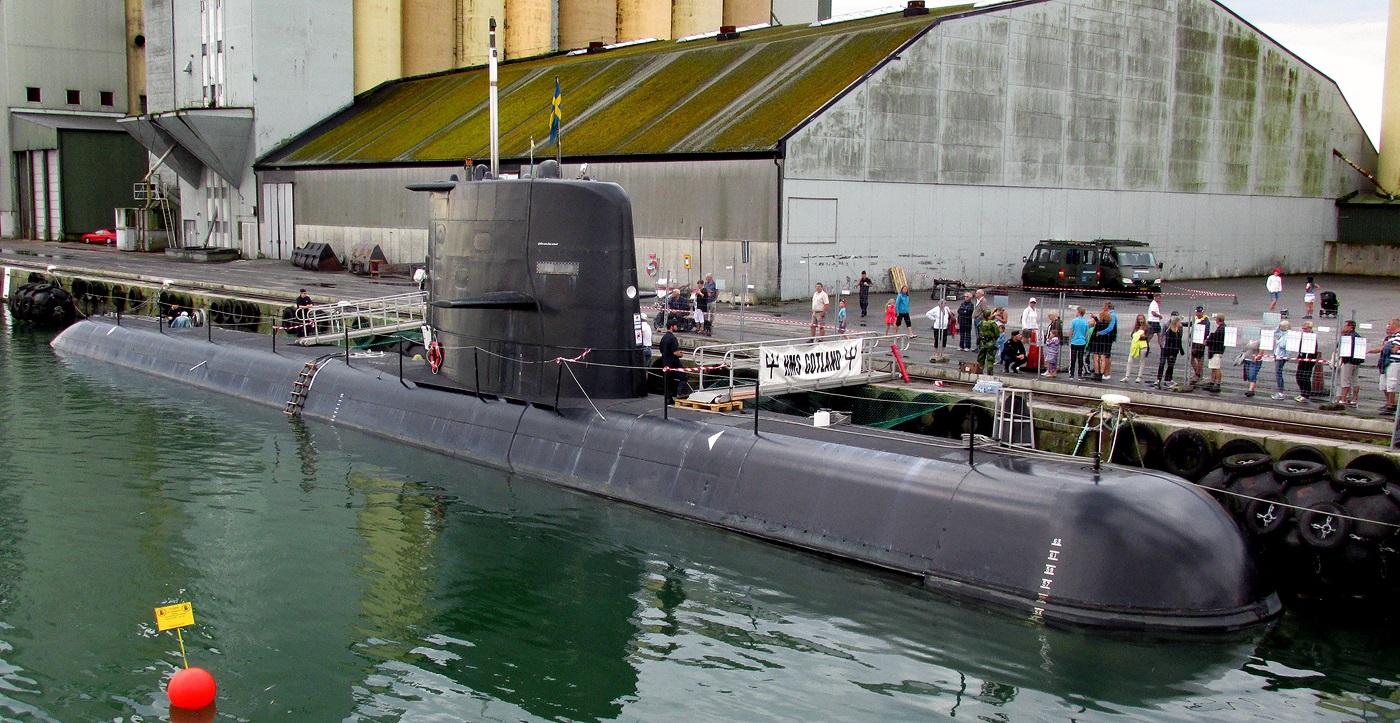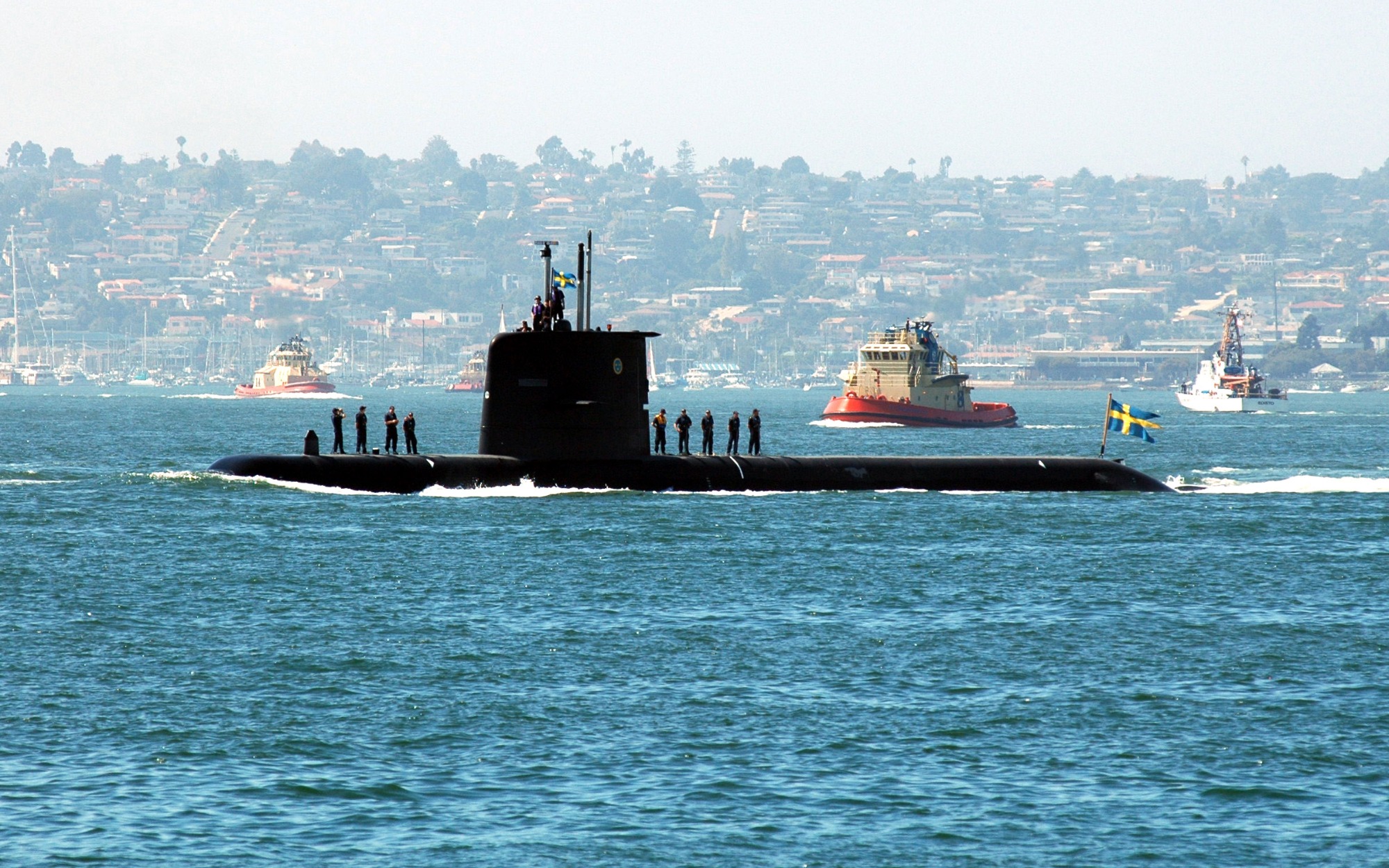$6,000,000,000 Nuclear Aircraft Carrier 'Sunk' By $100,000,000 Diesel Submarine
In a 2005 war game, the Swedish diesel-powered submarine HMS Gotland "sank" the U.S. Navy's $6 billion-plus USS Ronald Reagan carrier by evading detection and landing virtual torpedo hits.
The Key Facts: In a 2005 war game, the Swedish diesel-powered submarine HMS Gotland "sank" the U.S. Navy's $6 billion-plus USS Ronald Reagan carrier by evading detection and landing virtual torpedo hits.

-The Gotland’s advantage lay in its ultra-quiet Stirling engine, allowing it to bypass the carrier’s defenses and escape undetected.
-This exercise underscored a critical vulnerability for the U.S. Navy: low-tech, affordable diesel subs can challenge high-cost assets like carriers.
-Although faster carriers could theoretically evade such attacks, the Gotland’s success demonstrated the potency of smaller, stealthier platforms in modern naval warfare, highlighting the Navy's need to address these stealth threats.
$100M Sub Sinks $6B Aircraft Carrier: Lessons from U.S. Navy’s 2005 War Game
During war games in 2005, the $6 billion-plus USS Ronald Reagan was sunk. By whom? A single, relatively low-tech, diesel-powered Swedish submarine — the HMSM Gotland.
In the exercise, the Gotland was able to sneak past the Ronald Reagan’s passive sonar defenses, land multiple virtual torpedo hits, sink the carrier, and leave without a scratch.

The U.S. Navy had deployed an entire carrier strike group, which included destroyers, helicopters, and aircraft, all tasked with hunting for, and defending against, threats like the Gotland. The Swedish submarine should not have stood a chance, yet it evaded detection and scored a fatal blow against a superior adversary.
Popular Mechanics explains how:
“It’s all thanks to a very old-school engine. Instead of using its diesel to power an internal combustion engine (which is quite loud, what with the explosions and all), the Gotland-class sub instead uses highly optimized Sterling engines, not unlike what you might find as a desk toy, but considerably more high tech. These exceedingly quiet engines are used to charge batteries which in turn can directly run the engines. The result is a sub that’s quieter than any other diesel, and even quieter than its nuclear cousins which require a constant churn of coolant that can give away their position.”
Indeed, most modern navies rely on diesel submarines instead of nuclear submarines, because diesel subs are significantly cheaper. The drawback, typically, is that diesel subs are noisier, slower, and can only operate for a few days at a time without surfacing.
Gotland-Class Submarine: The Navy Reacts
The U.S. Navy was concerned to learn that a small Swedish submarine was able to sink an aircraft carrier with a nine-figure price tag. But the Navy leased the Swedish submarine and worked to address the vulnerabilities the Gotland had exploited.
The sub only cost about $100 million — roughly the cost of two F-18 Super Hornets. If a $100 million machine could sink a $6 billion machine, then the U.S. is not getting a very healthy return on its defense investment.
In theory, the defense spending advantage that the U.S. enjoys over its chief rivals, China and Russia, would not ensure military superiority or even relative safety.

Some have speculated that in real-world conditions, the Reagan would have been able to use its 30-knot top speed to evade successive torpedo strikes.
But that theory remains untested. And even one or two torpedo strikes could have served to force the carrier out of action and back to port for a lengthy and expensive repair process.
The simple fact that the Gotland served to demonstrate is that bigger and more expensive isn’t always better. A mosquito can kill a human. A submarine can kill an aircraft carrier. And sometimes, old-school tech has advantages over newer technology.
About the Author: Harrison Kass
Harrison Kass is a prolific defense and national security writer with over 1,000 published pieces. An attorney, pilot, guitarist, and minor pro hockey player, Harrison joined the US Air Force as a Pilot Trainee but was medically discharged. Harrison holds a BA from Lake Forest College, a JD from the University of Oregon, and an MA from New York University. Harrison listens to Dokken.
Image Credit:


